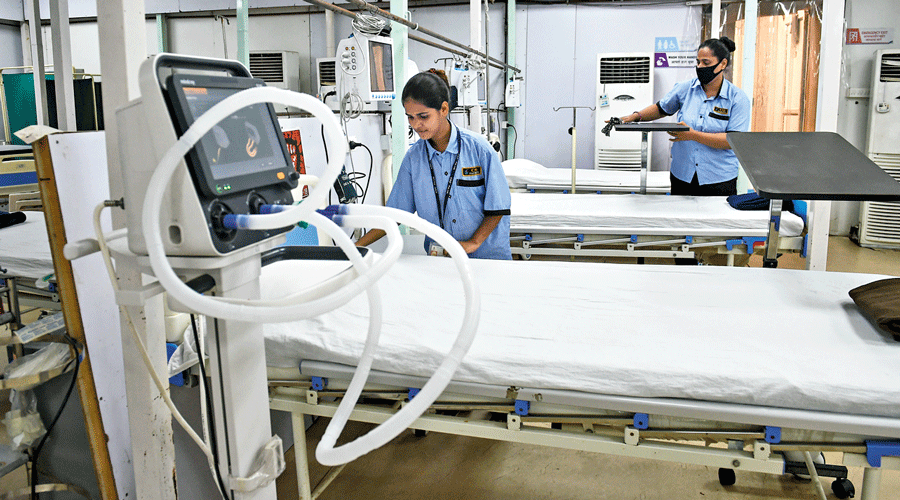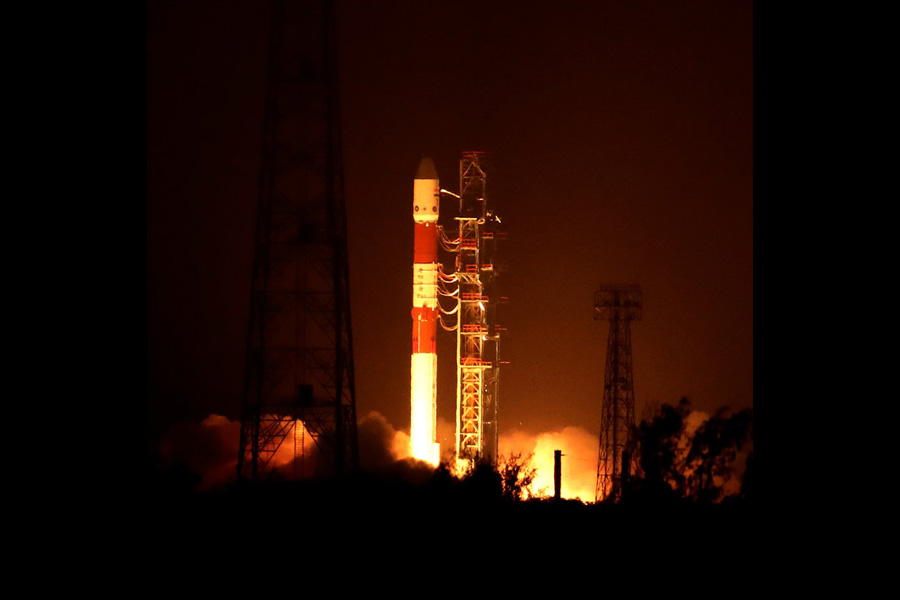The Union health ministry on Thursday alerted all states to a 58 per cent rise in the national average daily new Covid-19 cases over the past week amid uncertainty over what is driving the upsurge and how high the counts might rise.
India recorded 4,207 average daily new cases during the week ending June 8 compared to 2,663 average during the previous week, the health secretary Rajesh Bhushan said in a note to the states, calling for enhanced surveillance, testing and prompt genome sequencing.
The health ministry on Thursday recorded 7,240 new cases during the past 24 hours, a 38 per cent increase over 5,233 cases on Wednesday. But 81 per cent of Thursday’s new cases were concentrated in four states – Maharashtra (2,701), Kerala (2,271), Delhi (564), and Karnataka (376).
Alongside the upsurge in daily infections, however, there appears to be no change for now in the demand for hospital beds or oxygen, Sujeet Singh, director of the National Centre for Disease Control, New Delhi, told The Telegraph.
Health experts say the rising infection counts without associated need for hospital care likely reflect the continued spread of coronavirus variants amid dips in immunity acquired through either natural infections or vaccination but continued protection from severe disease.
Available sequencing data suggest sublineages of the omicron variant that had driven the country’s third Covid-19 wave in January this year remain dominant across the country, said a scientist with the nationwide consortium tasked with coronavirus genome sequencing.
The scientist said it is possible that a specific mutation in the BA.2 sublineage called 417T that likely had contributed to a mini-surge in Delhi in April this year might also be causing the current surge in infections in other states now.
“But this is only a speculative guess for now – we need to analyse more sequences from recent infections to determine whether 417T is driving the current upsurge,” said the scientist with the Indian National SARS-CoV-2 Genome Sequencing Consortium who requested not to be named.
Doctors in Maharashtra – the state with the largest daily counts – also said there is no impact yet on hospital bed and oxygen demand, but this could change if the counts rise beyond certain levels.
“We’ve not even opened our Covid-19 intensive care unit yet,” said Sanjith Saseedharan, the head of critical care medicine at the Raheja Hospital, Mumbai.
“The sublineages we’re dealing with are not aggressive. Patients have only mild illness and symptoms and are recovering at home.”
But, Saseedharan said, the demand for hospital care is expected to rise when daily new infection counts rise to levels between 10,000 and 15,000.
“At those levels, some patients with comorbidities (other underlying health disorders) will have reason to seek hospital care.”
The health secretary Bhushan, iterating the ministry’s earlier messages, has also asked states to look out for clusters of cases, test all patients with severe acute respiratory infections, increase surveillance, and send coronavirus positive samples for testing to INSACOG labs.










